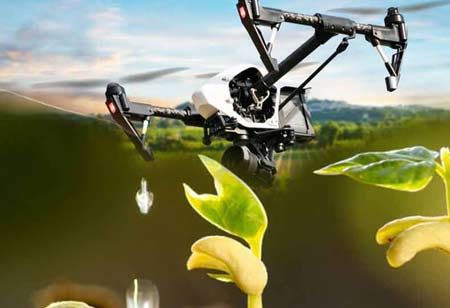Thank you for Subscribing to Agri Business Review Weekly Brief
How Computer Vision Helps Farmers Increase Their Yields?
Farming is ready for self-driving technology powered by computer vision learning models,

By
Agri Business Review | Wednesday, June 01, 2022
Stay ahead of the industry with exclusive feature stories on the top companies, expert insights and the latest news delivered straight to your inbox. Subscribe today.
Annotated data is used in agriculture to educate machines to recognize crops, weeds, insects, people, other machinery, and anything else on a farm.
FREMONT, CA: Farming is ready for self-driving technology powered by computer vision learning models, which promise to assist farmers in overcoming these obstacles and delivering on the important job of feeding the world.
Six specific ways computer vision is applied to robotics and automation to innovate specific farming functions.
1. Tractors with Autonomy
Fully autonomous tractors can run 24 hours a day, reducing workforce requirements and keeping people safe. Individual agricultural machinery, such as plows, mowers, planters, harvesters, and balers, can also be replaced by tractors, which we'll go over later.
2. Self-driving Plows
Autonomous plows use computer vision to recognize what they're plowing and avoid risks, including debris, other machines, and humans. CV-enabled plows can also record soil conditions and warn farmers of changes that may be required to boost harvests.
3. Self-sufficient Planters
Autonomous planters, sometimes coupled to tractors, spread seeds into the soil or plant seeds into small holes. Planters can use computer vision to create a precise soil map, automatically determine the proper seed spacing, and tag seed locations.
4. Self-contained Sprayers
Computer vision is used in emerging technologies such as autonomous sprayers to identify hazardous insects and specific plant-killing illnesses and provide suitable treatments. Drone sprayers that fly autonomously survey crops for spots that require care.
5. Harvesting Autonomy
Harvesting with CV can be done with autonomous tractors or autonomous mobile robots that employ robotic arms and picking devices to recognize and collect fruits and vegetables ready to be harvested.
6. Indoor Farming with Computer Vision
Vertical farming is known for growing crops indoors in a vertically stacked layer to maximize space and yields. Computer vision allows networks of cameras and other sensors to track the entire crop lifecycle and identify adjustments that will boost profits even further.





